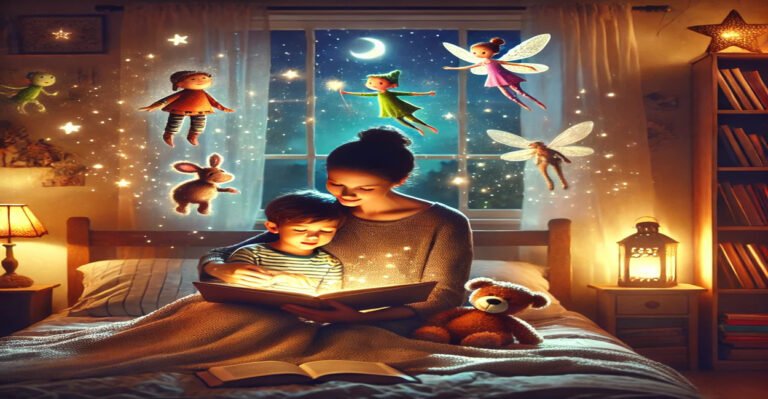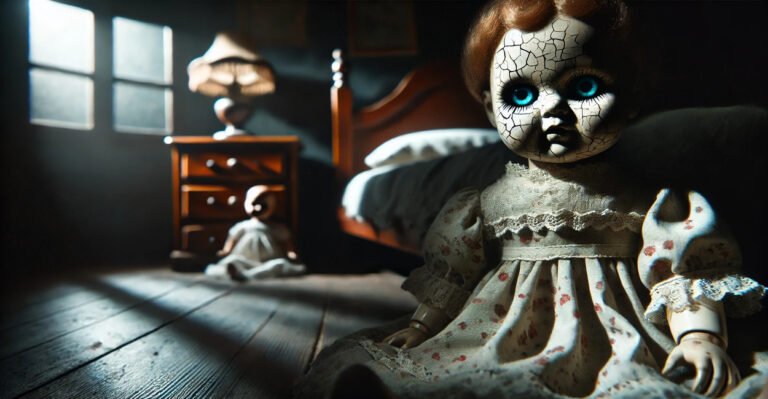Are Children’s Scary Stories Good or Bad for Young Minds?
Regarding storytelling, few genres spark as much debate as Children’s Scary Stories. Are they a thrilling way to ignite the imagination, or do they risk harming young, impressionable minds? As parents, educators, and storytellers, it’s natural to wonder whether these tales of ghosts, monsters, and eerie adventures are beneficial or detrimental.
At Storieslet, where we celebrate the art of storytelling across genres like moral stories, bedtime tales, and yes, even horror stories, we believe it’s essential to explore this topic in depth. So, let’s dive into the world of Children’s Scary Stories and uncover whether they’re good, bad, or somewhere in between for young minds.
What Are Scary Stories?
Defining the Genre
Scary stories, also known as horror stories, are tales designed to evoke feelings of fear, suspense, and unease. They often feature elements like ghosts, monsters, mysterious events, or dark settings. For children, these stories are typically toned down to be age-appropriate, focusing more on suspense and mild frights rather than graphic or intense horror.
The Anatomy of a Scary Story
A good Children’s Scary Story usually includes:
A relatable protagonist: Often a child or a group of kids who face a spooky challenge.
A mysterious setting: Think haunted houses, dark forests, or abandoned places.
A suspenseful plot: The story builds tension, keeping readers on the edge of their seats.
A resolution: Most children’s scary stories end with the protagonist overcoming the fear or solving the mystery, providing a sense of closure and empowerment.
Why They Captivate Young Minds
Scary stories captivate children because they offer a safe way to explore fear. The thrill of the unknown, combined with the reassurance of a happy ending, makes these stories both exciting and comforting. They allow kids to experience adrenaline rushes and emotional highs in a controlled environment, which can be both fun and educational.
The Allure of Children’s Scary Stories
Why Do Kids Love Scary Stories?
Children are naturally curious. They’re drawn to the unknown, the mysterious, and the thrilling. Children’s Scary Stories tap into this curiosity, offering a safe space to explore fear and excitement. These stories often feature brave protagonists who overcome challenges, which can be empowering for young readers.
Think about it: a child sitting wide-eyed as they listen to a tale of a haunted house or a spooky forest. Their heart races, their imagination runs wild, and they feel a rush of adrenaline—all while knowing they’re safe. This controlled exposure to fear can be both thrilling and educational.
The Role of Imagination
Scary stories are a playground for the imagination. They encourage kids to visualize eerie settings, mysterious characters, and suspenseful plots. This creative engagement helps develop critical thinking and problem-solving skills. For example, when a child imagines how the protagonist might escape a ghost, they’re actively engaging their brain in a way that’s both fun and mentally stimulating.
The Benefits of Children’s Scary Stories
Building Emotional Resilience
One of the most significant benefits of Children’s Scary Stories is their ability to help kids navigate fear. By experiencing fear in a controlled environment, children learn to manage their emotions. They realize that fear is a natural feeling and that it can be overcome. This emotional resilience can translate into real-life situations, helping kids face challenges with courage.
Encouraging Critical Thinking
Scary stories often involve puzzles, mysteries, and unexpected twists. As children try to predict what happens next or figure out how the hero will escape, they’re honing their critical thinking skills. This mental exercise is invaluable for cognitive development.
Strengthening Bonds
Sharing scary stories can be a bonding experience. Whether it’s a parent reading a spooky tale at bedtime or friends swapping ghost stories around a campfire, these moments create lasting memories. At Storieslet, we believe that storytelling is about more than just the story—it’s about the connections it fosters.
The Potential Downsides of Scary Stories for Kids
Fear and Anxiety
While many children enjoy scary stories, others may find them overwhelming. For some kids, these tales can lead to nightmares, anxiety, or even a fear of the dark. It’s essential to consider a child’s temperament and age when introducing them to horror stories. What’s thrilling for one child might be terrifying for another.
Overstimulation
In today’s digital age, kids are exposed to a lot of stimuli. Adding overly intense scary stories to the mix can sometimes lead to overstimulation. This can make it harder for children to relax, especially at bedtime. Moderation and age-appropriate content are key.
Misinterpretation of Themes
Young children often take stories at face value. If a scary story isn’t framed properly, they might misinterpret its themes. For example, a tale about a “bad” ghost might lead a child to believe that all supernatural beings are evil. It’s crucial to provide context and discuss the story afterward to ensure kids understand its message.
How to Choose the Right Scary Stories for Kids
Age-Appropriate Content
Not all scary stories are created equal. For younger children, opt for mild, whimsical tales with happy endings. As kids grow older, they can handle more suspense and complexity. At Storieslet, we categorize our horror stories by age group to make it easier for parents to find suitable content.
Focus on Empowerment
Choose stories where the protagonist triumphs over fear. These narratives teach kids that they, too, can overcome challenges. Avoid stories that glorify violence or leave the hero powerless.
Balance with Positive Themes
Pair scary stories with uplifting tales. This balance ensures that kids don’t become too fixated on fear. For example, after reading a spooky story, follow it up with a heartwarming fairy tale or a moral story that reinforces positive values.
Tips for Parents and Storytellers
Know Your Audience
Every child is different. Pay attention to how your child reacts to scary stories. If they seem anxious or scared, it might be best to switch to lighter tales. On the other hand, if they’re eager for more, gradually introduce them to more suspenseful stories.
Create a Safe Environment
When sharing scary stories, make sure the setting is comfortable and secure. A cozy blanket, dim lighting, and a reassuring presence can help kids feel safe while they explore the spooky world of the story.
Discuss the Story
After reading a scary story, talk about it with your child. Ask them how they felt, what they liked, and what scared them. This discussion can help them process their emotions and understand the story’s message.
The Role of Scary Stories in Child Development
Cognitive Development
Scary stories stimulate the brain. They encourage kids to think critically, solve problems, and use their imagination. This mental exercise is crucial for cognitive development.
Emotional Growth
By confronting fear in a safe environment, children learn to manage their emotions. They discover that it’s okay to be scared and that fear can be overcome. This emotional growth is an essential part of maturing.
Social Skills
Sharing scary stories can also improve social skills. Whether it’s taking turns to tell a story or discussing the plot with friends, these interactions help kids develop communication and empathy.
Conclusion
So, are Children’s Scary Stories good or bad for young minds? The answer isn’t black and white. When chosen carefully and shared thoughtfully, these stories can be a powerful tool for emotional, cognitive, and social development. They teach kids to face their fears, think critically, and use their imagination. However, it’s essential to consider each child’s unique temperament and to provide a safe, supportive environment for storytelling.
At Storieslet, we believe in the magic of storytelling in all its forms. Whether it’s a spine-tingling horror story or a heartwarming fairy tale, the right story at the right time can have a profound impact on a child’s life. So, the next time you’re browsing our collection of Children’s Scary Stories, remember: it’s not just about the scares—it’s about the lessons, the laughter, and the memories you’ll create together.

Storieslet is a storytelling platform dedicated to bringing joy, learning, and imagination to readers of all ages. From bedtime stories for kids to fairy tales, moral lessons, and thrilling adventures, it offers a diverse collection of captivating narratives. Each story is carefully crafted to entertain, educate, and inspire young minds. With a blend of classic and modern tales, Storieslet ensures a magical reading experience for families. Discover enchanting stories and timeless lessons at Storieslet!







